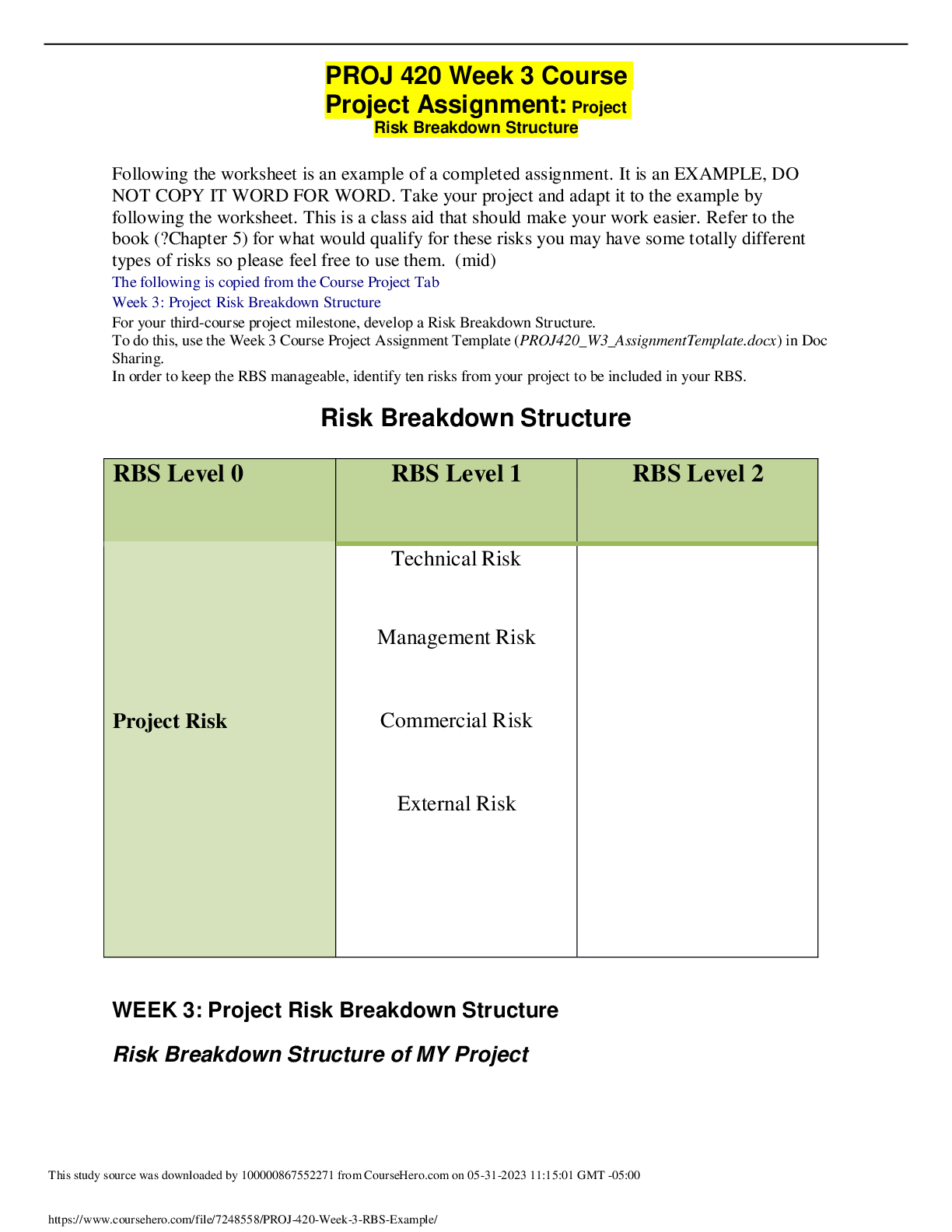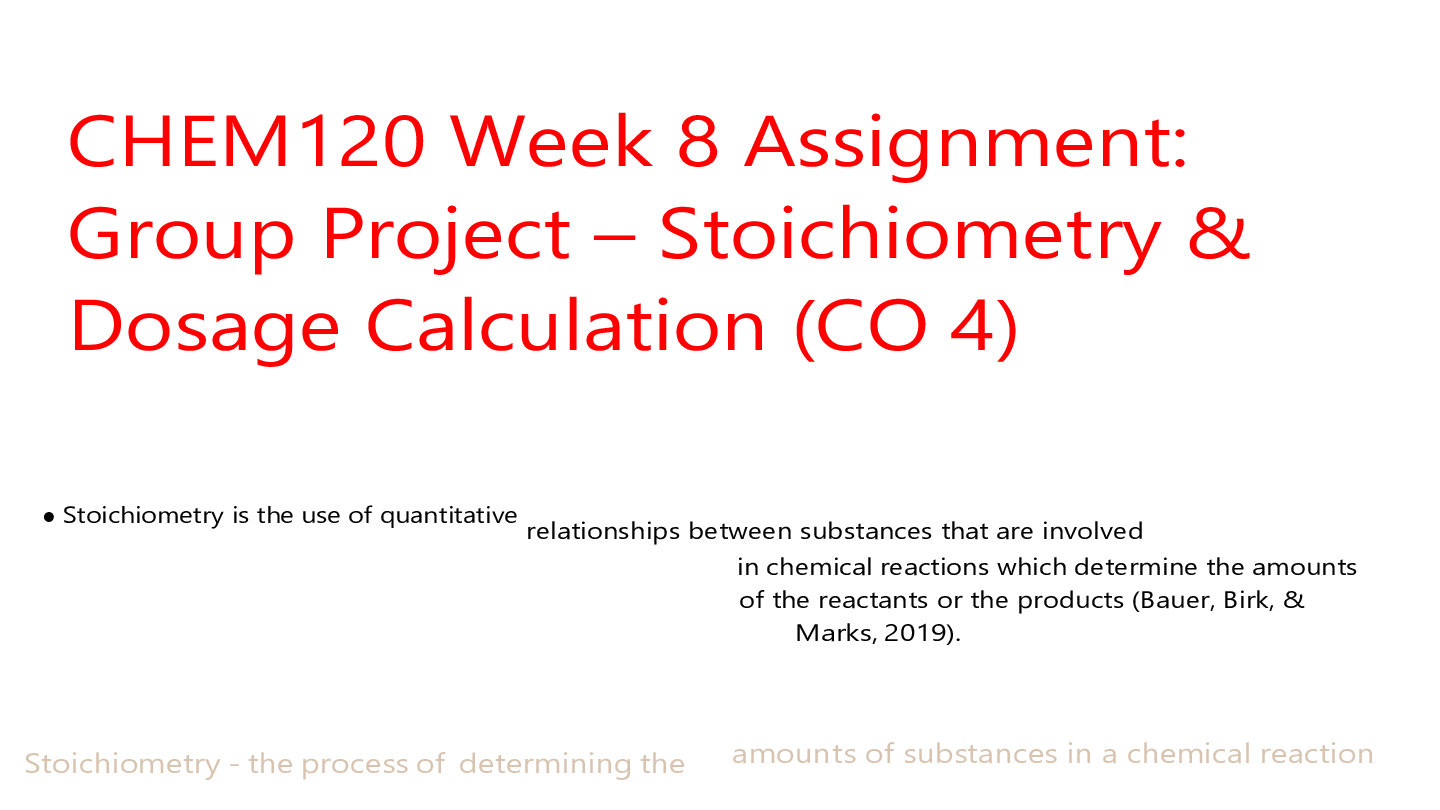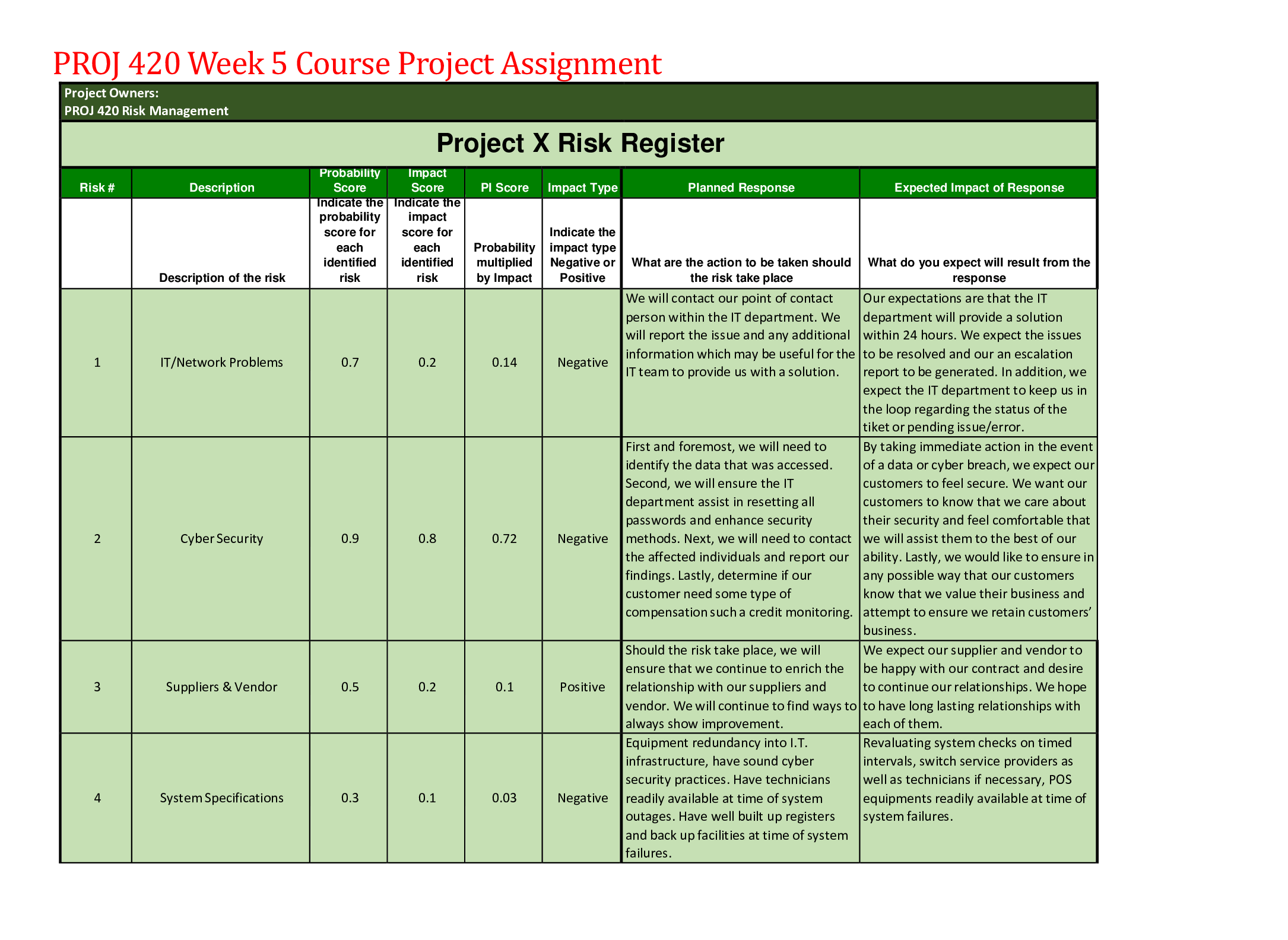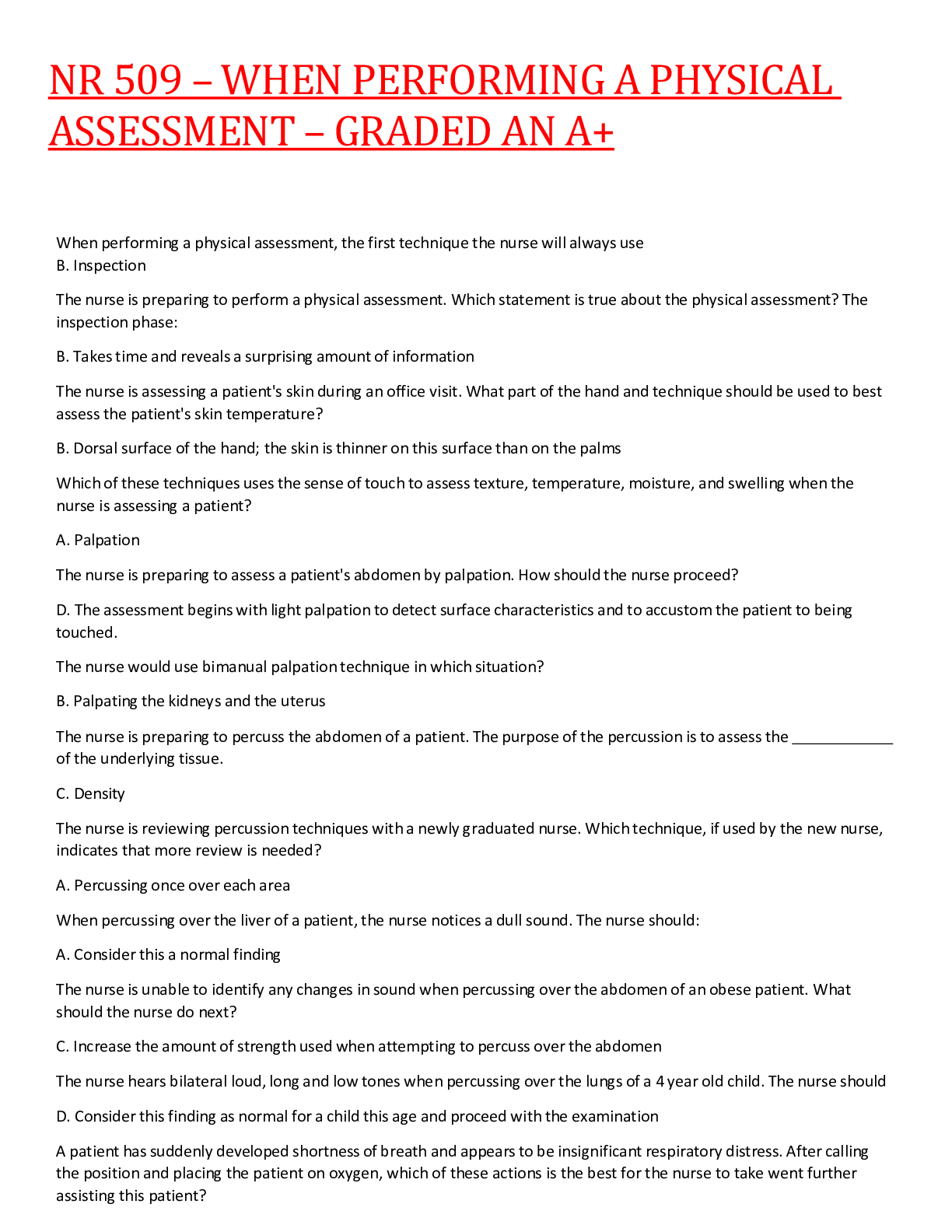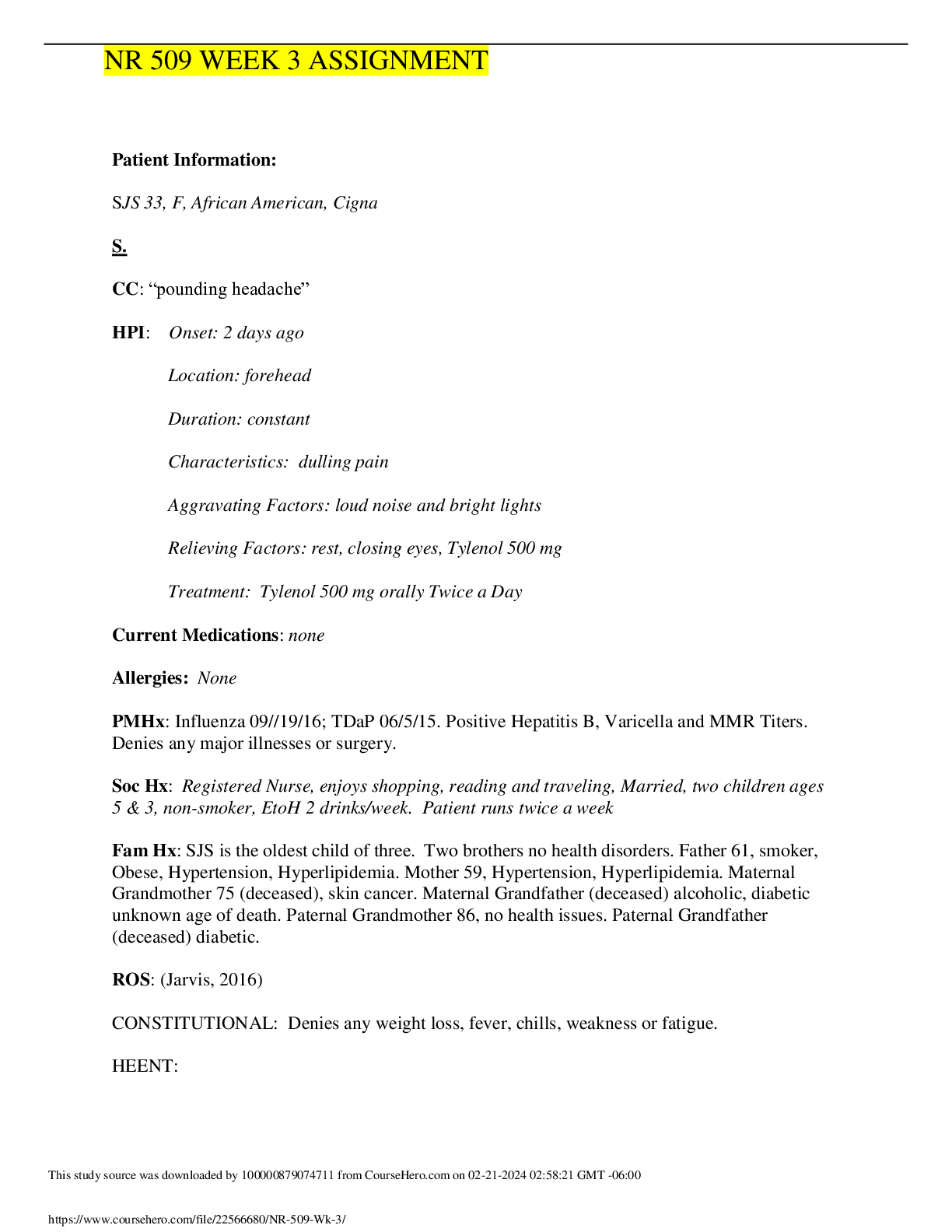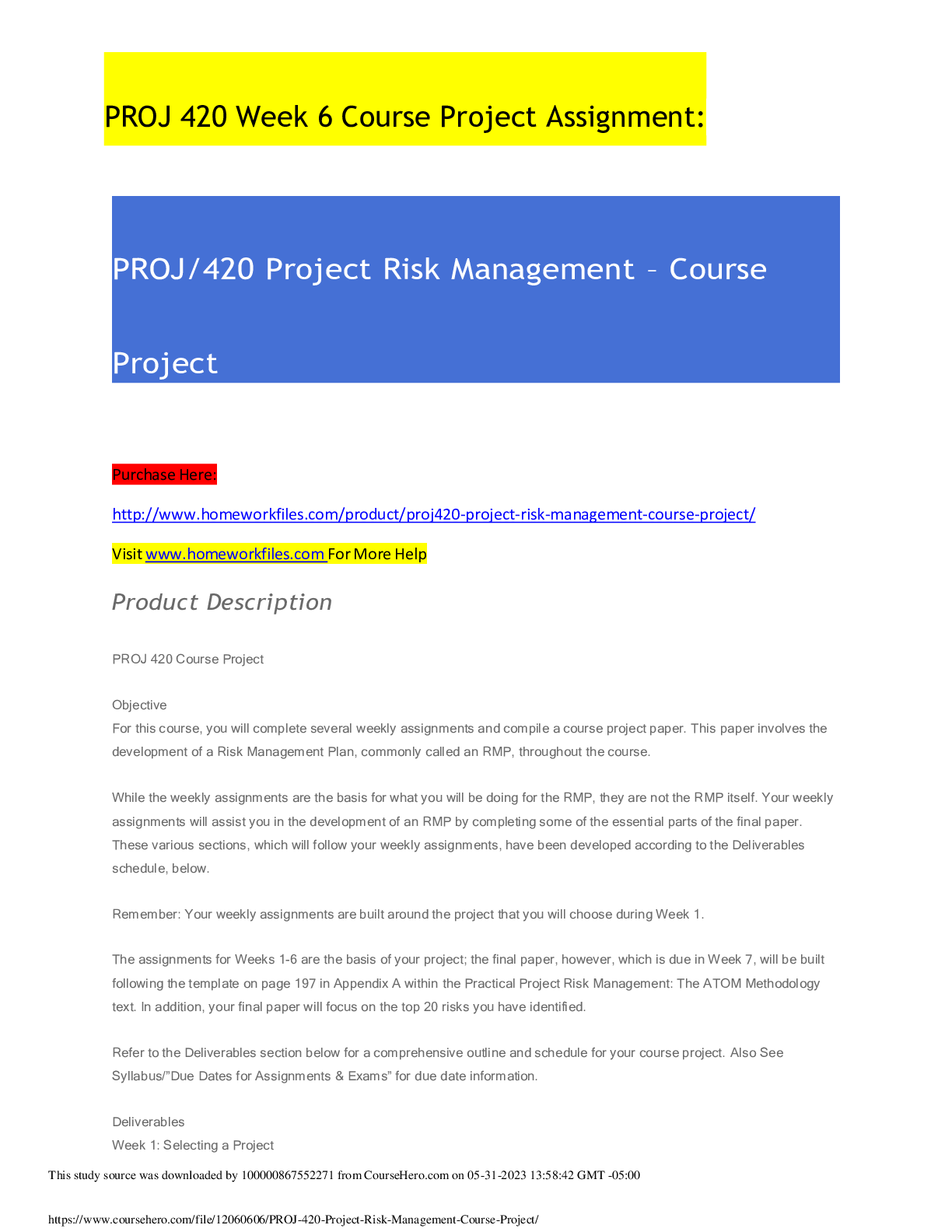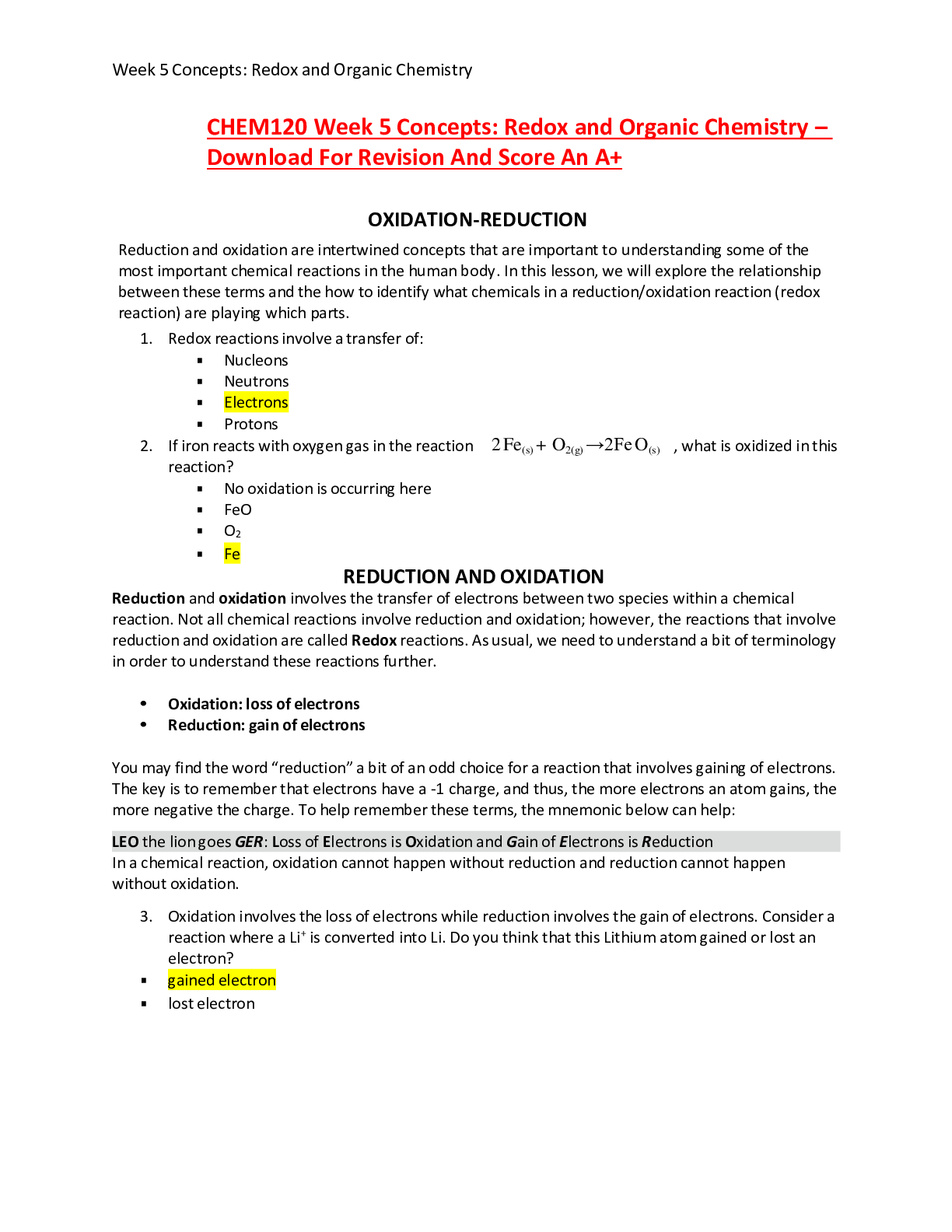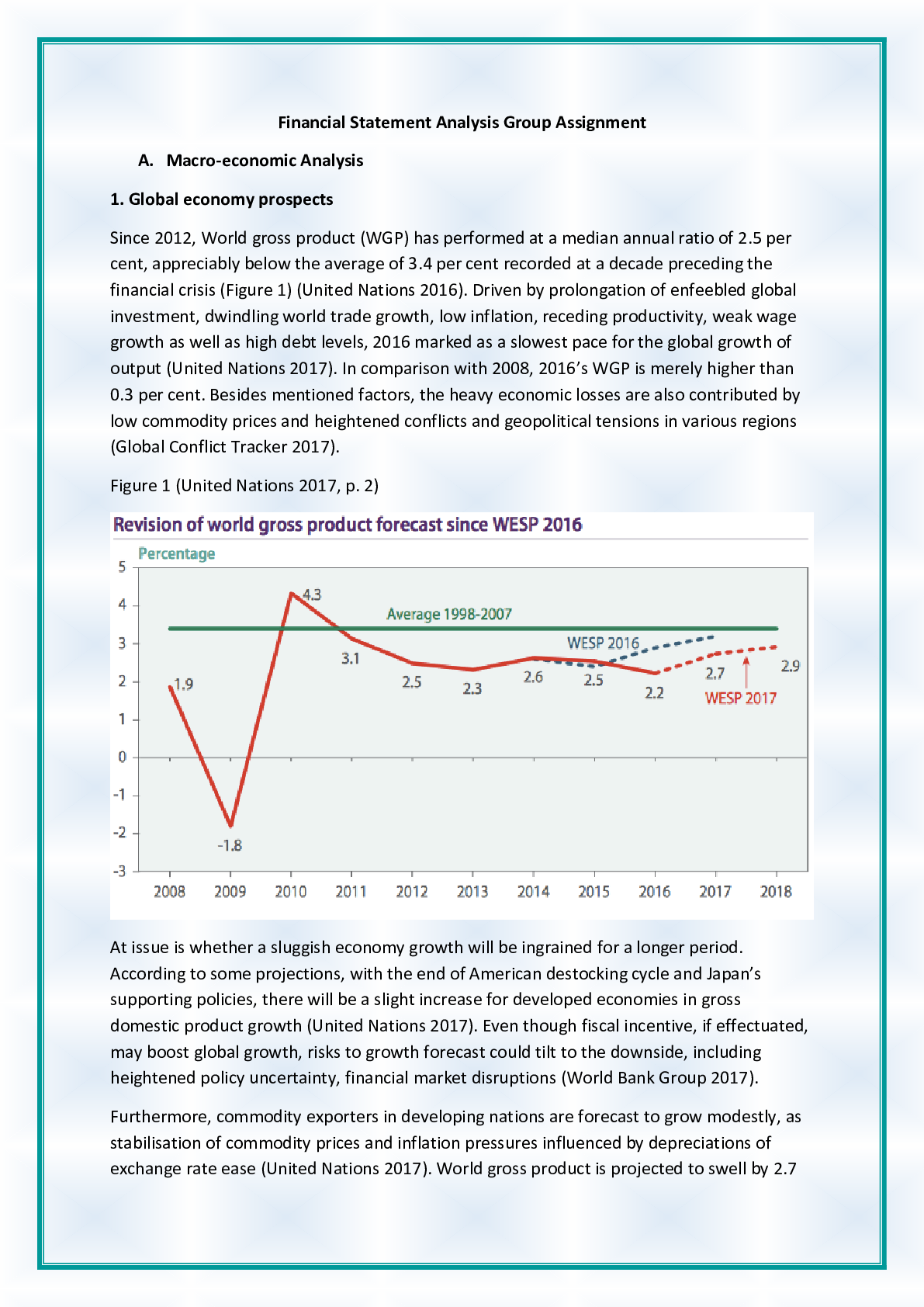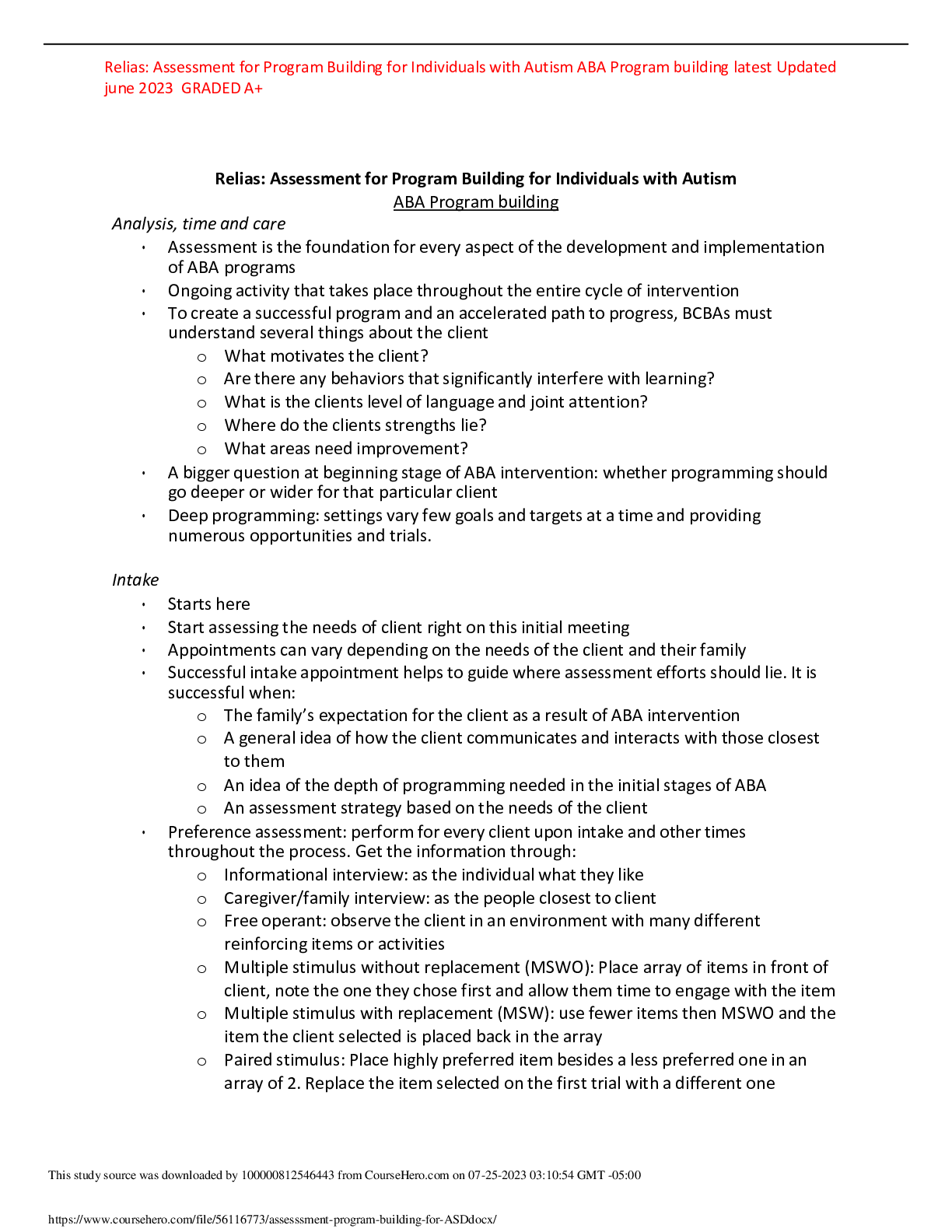Chemistry > ASSIGNMENT > CHEM120 Week 6 Assignment: Energy, Nuclear Chemistry and Biochemistry Part 1 (All)
CHEM120 Week 6 Assignment: Energy, Nuclear Chemistry and Biochemistry Part 1
Document Content and Description Below
CHEM120 Week 6 Assignment: Energy, Nuclear Chemistry and Biochemistry Part 1 Week 6 Lab: Nuclear Chemistry Objectives: • Identify the differences between chemical reactions and nuclear reactio... ns. • Identify the concept of radioactive decay. • Identify the nuclear changes associated with alpha, beta or gamma decay. • Write the products of nuclear reactions involving alpha, beta or gamma emissions. • Explain the concept of half-lives and complete half-life calculations. • Identify common subatomic particles and energies involved in nuclear reactions • Recognize common modes of radioactive decay (alpha, beta, gamma, and electron capture) by observing differences in nucleic mass defect and/or binding energies • Describe common applications of radioactive isotopes (nuclear medicine, radiometric/carbon dating, nuclear energy) • Describe how carbon dating works Radioactivity is something that only happens in nuclear power plants, right? Inthissimulation,youwilearnthatradioactivityismuchmorecommonthanyoumight think—infact,youaresurroundedbyit!Youwilalsolearnwhatypesofatomsare radioactiveandwhy,andhowalpha,beta,andgammadecaygeneratedifferentypesof radioactivity. Understand the processes happening in the atomic nucleus Useourholoflo rtovisualizehowprotonsandneutronsinteractinthenucleus. Experimentwithstabilityofisotopesandfigureoutwhysomecombinationsaremore stablethanothers. Analyze properties of alpha, beta, and gamma decay Radioactiveisotopescanundergoalpha,beta,andgammadecay.Eachofthese processesgeneratesradioactivity;luckily,weareinavirtualsimulationandwecan experimentwiththeseisotopeswithoutbeingexposedtoharmfulevelsofradiation. Ad itionaly,youwilbeabletose howprotonsandneutronsinteractinthenucleus thankstoouradvancedholoflo r. Not all atoms are stable. When atoms are born in a nuclear reactor, whether it be the heart of a star or a power plant, a portion of them are radioactive and are referred to as radioisotopes. These radioisotopes break down over time, releasing energy and transforming into more stable forms in processes known as radioactive decay. Part 1: Complete Labster lab: Nuclear Chemistry 1. Purpose: Describe in complete sentences and in your own words, the purpose of this experiment. During this experiment we learned how carbon dating works, how to explain half life, and I am able to now recognize radioactive decays, such as alpha, betta, and gamma. 2. Observations: Record three observations from the simulation. I. During alpha decay, 2 protons are expelled II. During beta decay, 1 electron is expelled and the loss of mass is smaller than alpha III. During gamma, 1 photon is expelled 3. Complete the table below Radiation type Affect on atomic number of product Affect on number of protons in product Affect on mass number of product Alpha particle Decrease by 2 Decreases by 2 Decreases by 4 Beta particle Increases by 1 Increases by 1 No change Gamma particle No change No change No change Positron Decreases by 1 Decreases by 1 No change Electron capture Decreases by 1 Decreases by 1 No change 4. In the space below, use X for the symbol of an element, Z for the atomic number and A for the mass number to write a general nuclide symbol. A X Z 5. An isotope of strontium has 38 protons and 52 neutrons. What is the nuclide symbol for an atom of this isotope? 90 SR 38 6. Write the nuclear equation for the gamma decay of fluorine-19. 19 F 0y +19 F 9 0 9 7. Write the nuclear equation for the positron emission of sodium-23. 23Na 0e+23Ne 11 +1 10 8. Suppose Potassium-41 undergoes electron capture. Write the nuclear equation that represents this process. K+0e 41Ar 19 -1 18 Part 2: Half-life and medical imaging Technetium-99m is an important isotope used in medical imaging (the m stands for metastable). Each day healthcare professionals around the world use Technetium-99m in thousands of medical scans. This material has a very short half-life of about 6 hours and decays by gamma decay to Technetium-99. In this exercise, you will look at why half-life is an important concern and how it affects your health. 9. Technetium-99m has a half-life of 6 hours. Use this to answer the following questions: a. What percentage of Technituum-99m would remain in your body 24 hours after injection with this radioisotope? Assume that the initial percentage is 100%. 6.18% Te b. In terms of radiation exposure, why is this short half-life beneficial? Half life tells us how long it takes to break down an element, and this can beneficial when administering medications to patients. 10. Due to the short half-life of Technetium-99m, this material cannot be easily transported. However, Technetium-99m can be formed from the beta decay of Molybdenum-99, which has a half-life of about 2.75 days. Unfortunately, the world’s supply of molybdenum-99 is in jeopardy as the nuclear facilities that produce this material are beginning to cease operations. Use this information to answer the following questions: a. Write the nuclear equation for the beta decay of Molybdenum-99. 95.94MO 0e 95.94 Te 42 -1 43 b. If you have 50 grams of Molybdenum-99, how many grams will remain after 11 days? 6.25g Mo c. Would a good solution to the coming shortage of Molybdenum-99 be for hospitals to stockpile large amounts of Molybdenum-99? Why or why not? No, it will expire before use due to its short half life. Reflection: Choose any medical isotope besides the ones mentioned in exploration 2 and report on the uses, half-life, decay type(s), and any safety concerns. Be sure to cite your sources fully. Cobalt-60. Cobalt-60 half life is 5.26 years. In medicine, it is used to treat cancers, and sterilized medical equipment. Cobalt-60 decays continuously. The time taken to lose 50% of its initial activity, i.e., its half-life, is 5.26 years. Usually 10% of the cobalt-60 is replenished annually. Britannica, T. Editors of Encyclopaedia (2022, February 15). cobalt- 60. Encyclopedia Britannica. https://www.britannica.com/science/cobalt-60 Grading Rubric: Activity Deliverable Points Part I Complete Nuclear Chemistry Simulation 10 Part II/III Complete questions based on the scenario • Purpose (1 point) • Observation (3 points) • Complete table (5 points) • Questions (10 points) • Reflection (6 points) 25 Total Complete all lab activities 35 [Show More]
Last updated: 1 week ago
Preview 1 out of 6 pages

Reviews( 0 )
Document information
Connected school, study & course
About the document
Uploaded On
Apr 24, 2024
Number of pages
6
Written in
Additional information
This document has been written for:
Uploaded
Apr 24, 2024
Downloads
0
Views
4

